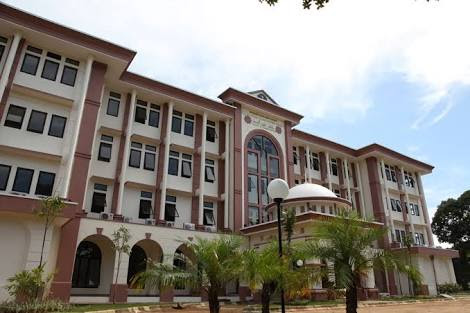IMPROVEMENT OF CREATIVITY IN MATHEMATICS STUDENTS THROUGH THE AUDITORY INTELLECTUAL REPETITION (AIR) LEARNING MODEL
PENINGKATAN KREATIVITAS MATEMATIKA SISWA MELALUI MODEL PEMBELAJARAN AUDITORY INTELLECTUALY REPETITION (AIR)
Abstract
This study aims to determine the increase in students' mathematical creativity through the auditory, intellectual, repetition (AIR) learning model in class XI students of SMK Techno Terapan Makassar. Creativity referred to in this study pays attention to 3 aspects of indicators, namely fluency, flexibility, and novelty. This research is research class action (PTK). The subjects of this study were students of class XI at SMK Techno Terapan Makassar. The results showed that there was an increase in creativity in learning mathematics through the auditory, intellectual, repetition (AIR) learning model. Student test results seen based on the percentage per indicator increased from cycle I to cycle II seen in the aspect of fluency 66.66% increasing to 81.48%, the aspect of flexibility 62.96% increasing to 77.78%, and the novelty aspect increasing 33.33% to 48.14%. the learning completeness criteria in cycle I was 55.55% and classically complete in cycle II was 77.77% or as many as 22 people who scored . Data from the analysis of teacher activity in cycle 1 increased by 60.42% to 72.90% while the results of student activity analysis in cycle 1 amounted to 56.26% increased to 70.92%. From the research results obtained, it can be concluded that the Auditory, Intellectual, Repetition (AIR) learning model can increase the mathematical creativity of class XI students of SMK Techno Terapan Makassar.
Downloads
References
Anurahman. (2016). Belajar dan Pembelajaran. Bandung: Alfabeta.
Bonatua, D. S., Mulyono, D., & Febriandi, R. (2021). Penerapan model pembelajaran AIR (auditory, intellectualy, repetition) menggunakan media gambar pada pembelajaran tematik sekolah dasar. Jurnal Basicedu, 5(5), 3850–3857. https://doi.org/10.31004/basicedu.v5i5.1462.
Budiarti, Y. (2015). Pengembangan kemampuan kreativitas dalam pembelajaran. PROMOSI (Jurnal Pendidikan Ekonomi), 3(1), 61–72. https://doi.org/10.24127/ja.v3i1.143.
Dosinaeng, W. B. N. (2019). Analysis of students’ higher order thinking skills in solving basic combinatorics problems. Math Didactic: Jurnal Pendidikan Matematika, 5(2), 133–147. https://doi.org/10.33654/math.v5i2.611.
Effendi, K. N., & Farlina, E. (2017). Kemampuan berpikir kreatif siswa SMP kelas VII dalam penyelesaian masalah statistika. Jurnal Analisa, 3(2), 130–137. https://doi.org/10.15575/ja.v3i2.2013.
Firmansyah, D. (2015). Pengaruh strategi pembelajaran dan minat belajar terhadap hasil belajar matematika. Jurnal Pendidikan Unsika, 3(1), 34-44. https://doi.org/10.35706/judika.v3i1.199.
Huliatunisa, Y., Wibisana, E., & Hariyani, L. (2019). Analisis Kemampuan berfikir kreatif matematis siswa dalam menyelesaikan soal pemecahan masalah. Indonesian Journal of Elementary Education (IJOEE), 1(1), 56–65. https://doi.org/10.31000/ijoee.v1i1.2567.
Leikin, R., & Pitta-Pantazi, D. (2013). Creativity and mathematics education: The state of the art. ZDM - International Journal on Mathematics Education, 45(2), 159–166. https://doi.org/10.1007/s11858-012-0459-1.
Manurung, S. H. (2016). Upaya Meningkatkan Kreativitas Dan Hasil Belajar Siswa Dengan Menggunakan Model AIR (Auditory, Intellectually, Repetition) Pada Siswa Kelas VII MTs Negeri Rantauprapat T.P 2014/2015. Jurnal EduTech, 2(1), 97–107. http://dx.doi.org/10.30596%2Fedutech.v2i1.580.
Mursidik, E. M., Samsiyah, N., & Rudyanto, H. E. (2015). Creative Thinking ability in solving open-ended mathematical problems viewed from the level of mathematics ability of elementary school students. PEDAGOGIA: Journal of Education, 4(1), 23–33. https://doi.org/10.21070/pedagogia.v4i1.69.
Nindiasari, H. (2011). Pengembangan bahan ajar dan instrumen untuk meningkatkan berpikir reflektif matematis berbasis pendekatan metakognitif pada siswa sekolah menengah atas (SMA). Prosiding Seminar Nasional Matematika Dan Pendidikan Matematika FMIFA Universitas Negeri Yogyakarta., 251–263. Retrieved from http://eprints.uny.ac.id/id/eprint/7378.
Novianti, F., &, & Yunianta, T. N. H. (2018). Analisis kemampuan berfikir kreatif siswa SMP dalam menyelesaikan soal matematika pada materi bentuk aljabar yang ditinjau dari perbedaan gender. Jurnal Maju, 5(1), 120–132. Retrieved from https://ejournal.stkipbbm.ac.id/index.php/mtk/article/view/182.
Puspitawedana, D., Sujadi, A. A., & Harini, E. (2014). Upaya meningkatkan kreativitas dan prestasi belajar matematika melalui model pembelajaran auditory intellectually repetition siswa kelas XD SMA Negeri 1 Tanjungsari Gunung Kidul Tahun Ajaran 2012/2013. UNION: Jurnal Pendidikan Matematika, 2(1), 89–96. https://doi.org/10.30738/.v2i1.32.
Qulub, S., & Manoy, J. T., (2020). Proses berpikir kreatif siswa SMP bergaya kognitif impulsif dan reflektif dalam mengajukan masalah matematika. MATHEdunesa, 9(3), 468–477. https://doi.org/10.26740/mathedunesa.v9n3.p468-477.
Rahayuningsih, S. (2017). Penerapan model pembelajaran matematika model auditory intellectually repetition (AIR). Erudio Journal of Educational Innovation, 3(2), 67–83. https://doi.org/10.18551/erudio.3-2.6.
Saefudin, A. A. (2012). Pengembangan kemampuan berpikir kreatif siswa dalam pembelajaran matematika dengan pendekatan pendidikan matematika realistik indonesia (PMRI). Al-Bidayah, 4(1), 37–48. https://doi.org/10.14421/al-bidayah.v4i1.10.
Salahudin, A. (2015). Penelitian tindakan kelas. Bandung: Pustaka Setia.
Santoso, S. D., Widodo, & Sri, P. A. (2014). Belajar matematia dengan model pembelajaran probing-prompting pada siswa kelas X kulit A SMK Negeri 5 Yogyakarta. UUNION: Jurnal Pendidkan Matematika, 2(1), 53–62. https://doi.org/10.30738/.v2i1.27.
Simanjuntak, E., Hia, Y., & Manurung, N. (2019). Analisis kemampuan berpikir kreatif dalam pemecahan masalah ditinjau dari perbedaan gender. School Education Journal, 9(3), 213–220. https://doi.org/10.24114/sejpgsd.v9i3.15663.
Sriwongchai, A. (2015). Developing the mathematics learning management model for improving creative thinking in Thailand. International Education Studies, 8(11), 77. https://doi.org/10.5539/ies.v8n11p77.
Copyright (c) 2022 Nur Asrawati, Sitti Fatimah Sangkala Sirate

This work is licensed under a Creative Commons Attribution 4.0 International License.

